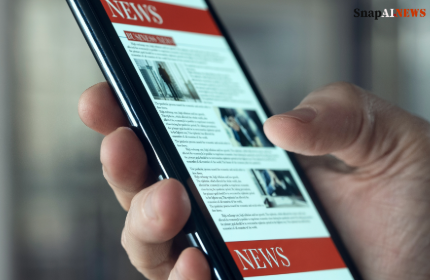A.I. takes center stage at Qualtrics’ X4 summit – Salt Lake Tribune
The next frontier of human innovation and productivity could cut humans out of the workforce entirely — or at least that’s the fear that speakers at Qualtrics’ annual X4 summit in Salt Lake City aimed to soften.
Artificial intelligence will “completely change” the way we interact with technology and with each other, Qualtrics CEO Zig Serafin told an audience Wednesday at the Salt Palace Convention Center.
But Serafin and others said there’s more to celebrate than to fear.
“Everything you’re doing across [Qualtrics’] channels has prepared us for the A.I. revolution,” Serafin said. “We see a world where the shift to A.I.-driven software will be as profound as the shift from analog to digital.”
While Utah’s Silicon Slopes is a hot spot for tech jobs, the state ranks squarely in the middle for jobs that require A.I. skills, according to an analysis from the University of Maryland. But Utah just appointed its first director of the Office of Artificial Intelligence Policy, Zachary Boyd, to lead an office created by a bill passed in the Legislature this year. The state is trying to stay ahead of the conversation, legislators said.
Qualtrics announced a new executive last month whose job is to lead the Utah company’s A.I. strategy, former Microsoft exec Gurdeep Singh Pall. The new president of A.I. strategy shared a stage briefly with Serafin, and then with Mira Murati, OpenAI’s chief technology officer, Wednesday morning.
Pall said artificial intelligence has the potential not to separate humanity, but to unify it.
“In my mind, probably the most important impact of A.I. is going to be about how humans experience the world [with] A.I.,” he said. “It will be about how A.I. helps us understand humans in a very deep way, at scale.”
(Francisco Kjolseth | The Salt Lake Tribune) Mira Murati, chief technology officer at Open AI — the company that developed ChatGPT— joins Gurdeep Pall, president of AI strategy at Qualtrics, for a conversation during the X4 tech summit at the Salt Palace Convention Center in Salt Lake City on Wednesday, May 1, 2024.
Murati, who helped lead the development of ChatGPT and DALL-E (OpenAI’s visual platform), said one of A.I.’s most surprising developments is not its capacity to mimic human language or likeness, but how quickly it has already “integrated” into the human economy and everyday lives. Anyone with internet access has access to some form of A.I..
“That’s really different from how we’ve developed technology before, where it takes quite a long time to penetrate society,” Murati said.
Multiple breakout sessions at this year’s summit were devoted to A.I. and its impact on work. In one, Qualtrics leaders Cecelia Herbert and Matt Evans told a crowd of HR reps and company executives that employees are afraid of A.I. — specifically, afraid it will take their jobs or make them irrelevant.
“Disruptive” technology has historically targeted more physical labor, Evans said — for example, mechanical dishwashers automated cleaning, and ATMs automated the need to count bills. A.I., meanwhile, targets “knowledge labor.”
“It’s a change in the very nature of work,” Evans said.
The task, Evans and Herbert said, is to integrate A.I. in ways that support workers rather than replace them. Research suggests employees are uncomfortable with A.I. taking over too much of their work, but are fine with letting it do such things as scheduling and drafting emails.
(Francisco Kjolseth | The Salt Lake Tribune) People attend the Qualtrics X4 tech conference summit at the Salt Palace Convention Center in Salt Lake City on Wednesday, May 1, 2024.
‘No ceiling’ to A.I. potential
Artificial intelligence technology has evolved rapidly in recent years, and Murati said she does not expect it to slow down.
“There is no evidence to the scaling paradigm stopping any time soon,” Murati said. “We should expect the models [to] become much more powerful.”
They might also become much more human, Murati said. To a large extent, she said, OpenAI has already figured out speech and visuals.
“We want to imbue [future] models with a sense of the world and an understanding of the world that’s similar to how we understand the world,” Murati said. “So we both understand it, and interact with each other in ways that are beyond language.”
There are ethical implications and risks, she added, noting that OpenAI has teams of engineers devoted to keeping the technology “safe,” in check and “aligned with human values.”
But the future of A.I., its next iteration, is right around the corner, Murati said. New technologies could be unveiled within the next year.
“I’m optimistic that if we get this right, it will be [an] incredible future,” Murati said. “There’s so much opportunity, things we haven’t figured out how to do on our own. We haven’t figured out climate change … [or] free and high-quality education and health care to most people in the world. And this technology really has the potential to help us figure out those things.”
Shannon Sollitt is a Report for America corps member covering business accountability and sustainability for The Salt Lake Tribune. Your donation to match our RFA grant helps keep her writing stories like this one; please consider making a tax-deductible gift of any amount today by clicking here.











